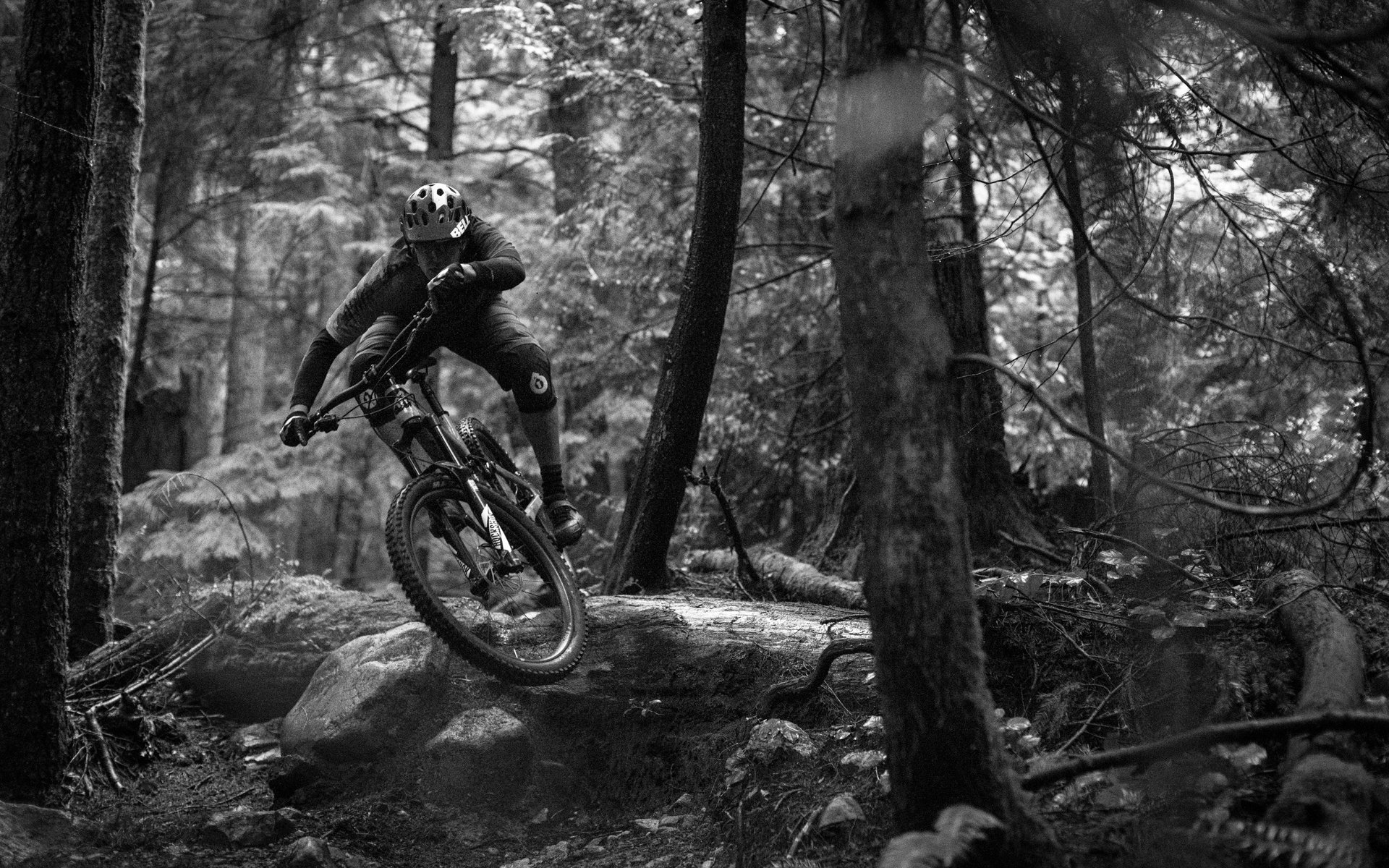
LONG-TERM REVIEW
Rockshox Lyrik RCT3
Longer travel trail bikes are becoming all the rage these days. Rockshox launched the Lyrik in 2015, which showed up on the front end of many of those bikes for 2016. This included the Transition Patrol I’ve been bashing about for the last couple of months. In a game of spot the difference between the Pike and Lyrik you’d be excused for getting them confused. The Lyrik appears to have nicked all the best bits from the Pike, beefed up the structural parts, and added a bit of travel. If you’re keen on seeing the Lyrik from the inside, you can check out the awesome teardown article from Andrew Major.
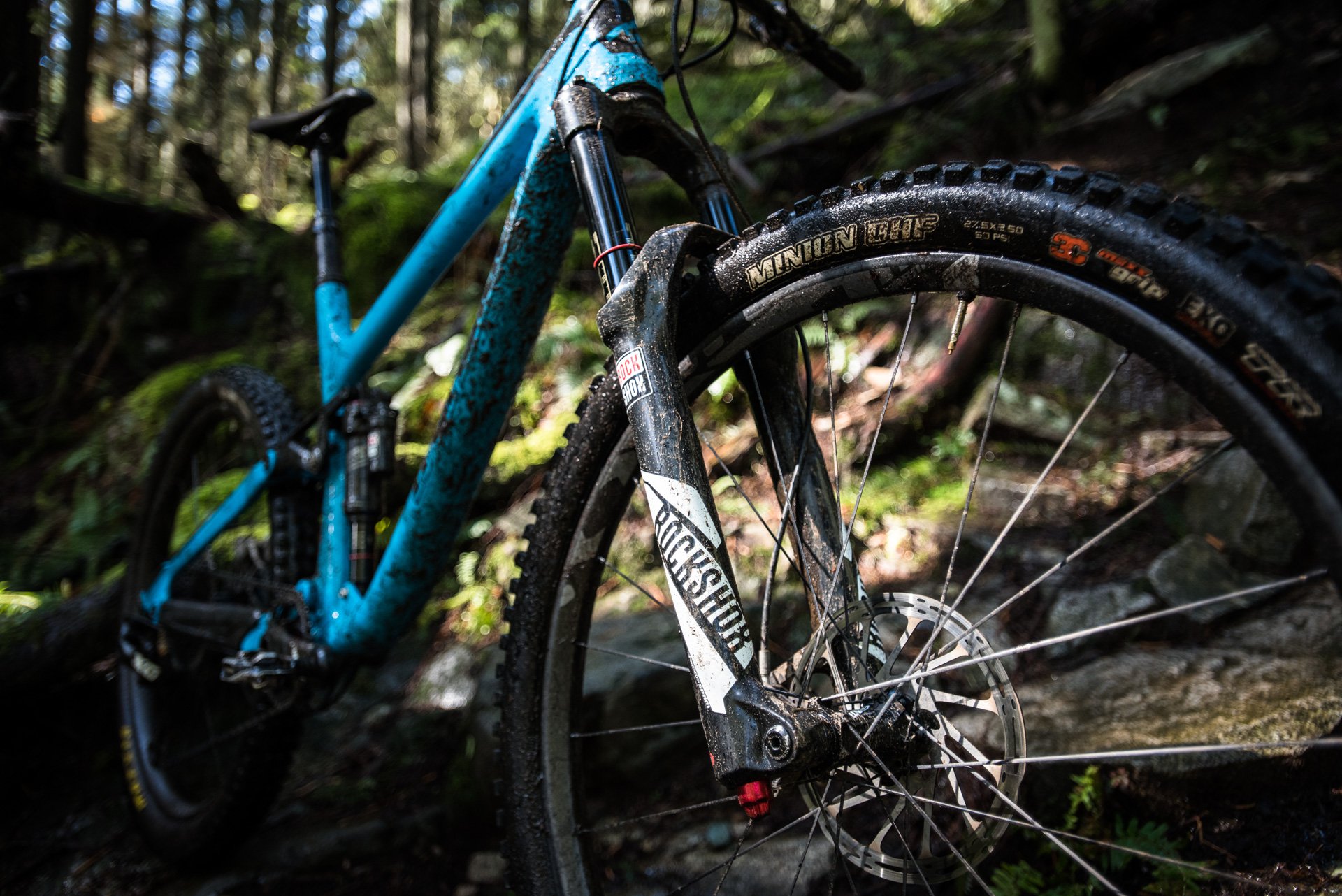
The Rock Shox Lyrik RCT3 bolted to the front of a Transition Patrol Carbon. A worthy combination I’m sure you’ll agree
The model I’ve been testing on the Transition Patrol is the 160 mm travel Lyrik RCT3, which was the catalyst for this review. However, I have a Lyrik RC that came on my personal bike and have ridden two other test bikes with Lyrik RCs. The biggest take away for me is how consistently good the Lyrik has been. Even though each fork has different mileage, ridden at different temperatures, some rebuilt and some not; they all feel darn near identical on the trail. All feel buttery smooth, damper feel is consistent, and none make any noise or show any bushing play. So while the fork in particular that I’m reviewing in this article has been worked over by Jeff Bryson of the Bike Room, I can say that the build consistency of the Lyrik is impressive and that is a quality I don’t think can be overstated.
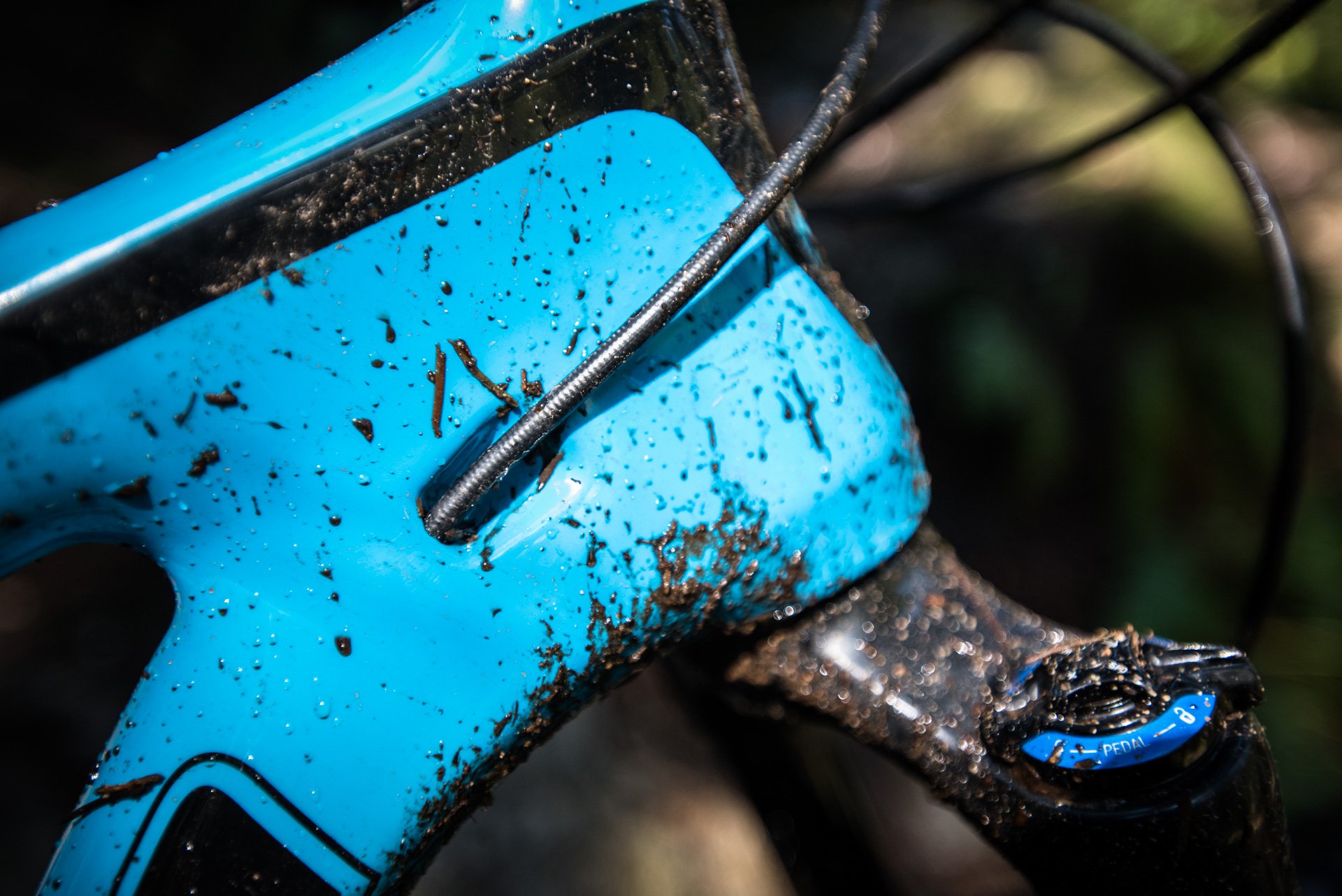
The external compression adjusters. The large blue knob is a three position adjuster for Open, Pedal or Lock. The smaller, inner knob, adjusts the low speed compression damping in the Open mode.
Settings
I like the air pressure at 85-90 psi, which are the recommended pressures for 200-210 lb riders. For reference, I weigh in at 185 lbs. I liked the fork most with 3 volume spacers. Compression set to 5 clicks out from closed, from a total of 13 clicks. Rebound set on the quicker side at 12 clicks out from closed, from a total of 17 clicks. This seems to give a nice balance of support, resists severe bottom out, but is supple enough through the high-speed chunk.
One of the first things I noticed on the Lyrik is how supple the fork feels off the top. It's buttery, especially for an air fork. A gentle push on the handlebars results in a satisfyingly smooth reaction. I always liked the feel of the air spring in the Pike, and the Lyrik seems to be even better. With 3 tokens in the fork, I liked the progressivity of the air spring. There seems to be enough adjustment with the fork volume spacers that the majority of riders should be able to find a combination of tokens and air pressure to suit their taste.
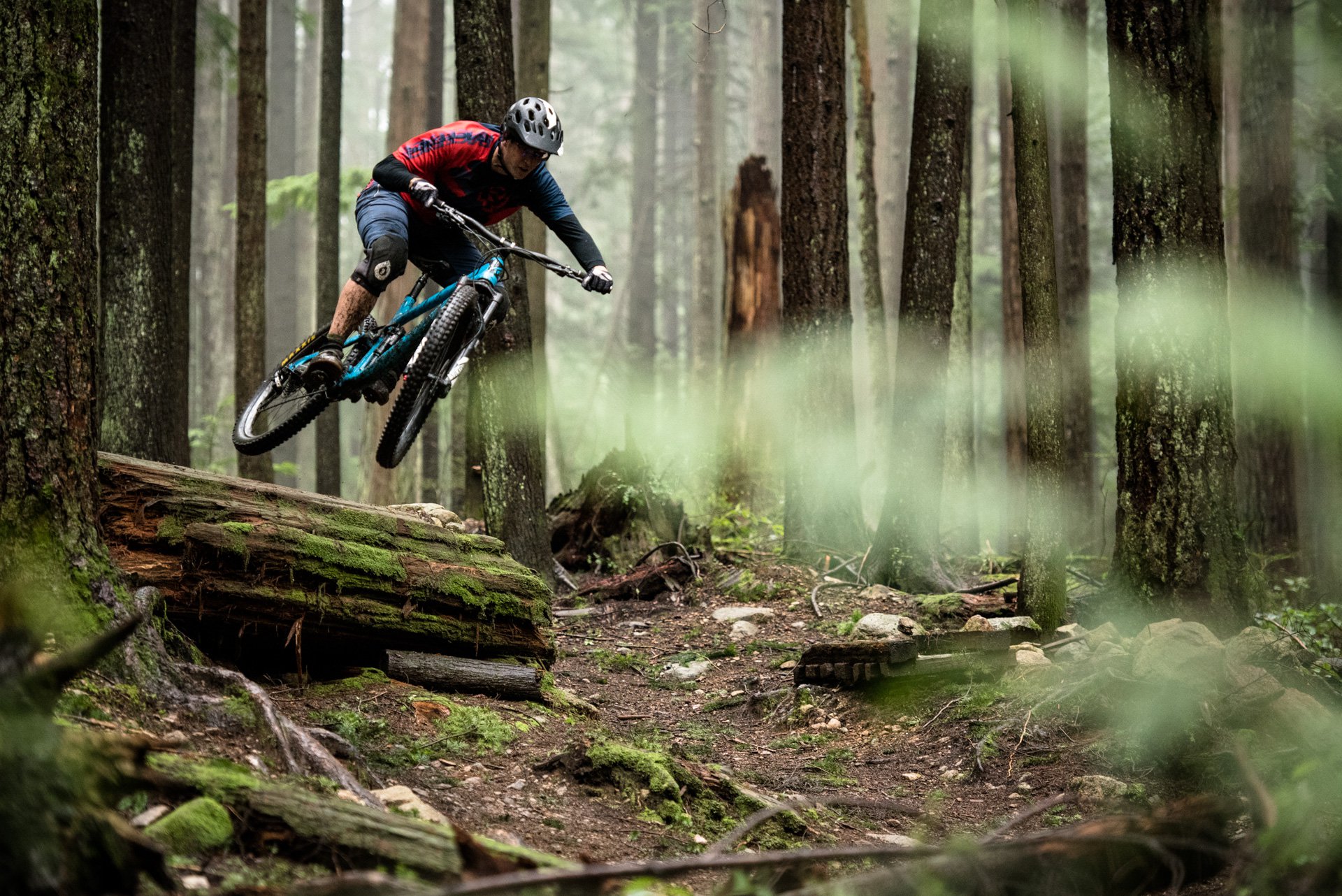
This is the paragraph where I would normally do most of my moaning, but I really don’t have much moaning to do today, which is probably worth moaning about. Price-wise the Lyrik falls in line with most other top shelf 160mm single crown forks at just under $1,000 USD, and at a similar weight of 2,005 grams. My first sort of criticism is that I’d personally prefer to have externally adjustable high-speed and low-speed compression to fine tune my preferences. That said the Charger damper does a bang up job of providing good low-speed compression support, with what seems to be a nice open high-speed compression circuit. If I had a knob to fiddle for a high-speed compression setting, I probably wouldn’t be far off where the Charger damper has been preset. To boot I think the Charger damper works better than many fancier, more adjustable dampers.
My other minor criticism is that I wish the Lyrik was available in a coil sprung variant. The good folks at Norco John Henry have converted a buddy's Lyrik with Rock Shox parts to run with a coil spring and the results are fantastic. Pretty please Rock Shox, you already have all the bits to make this happen … please!
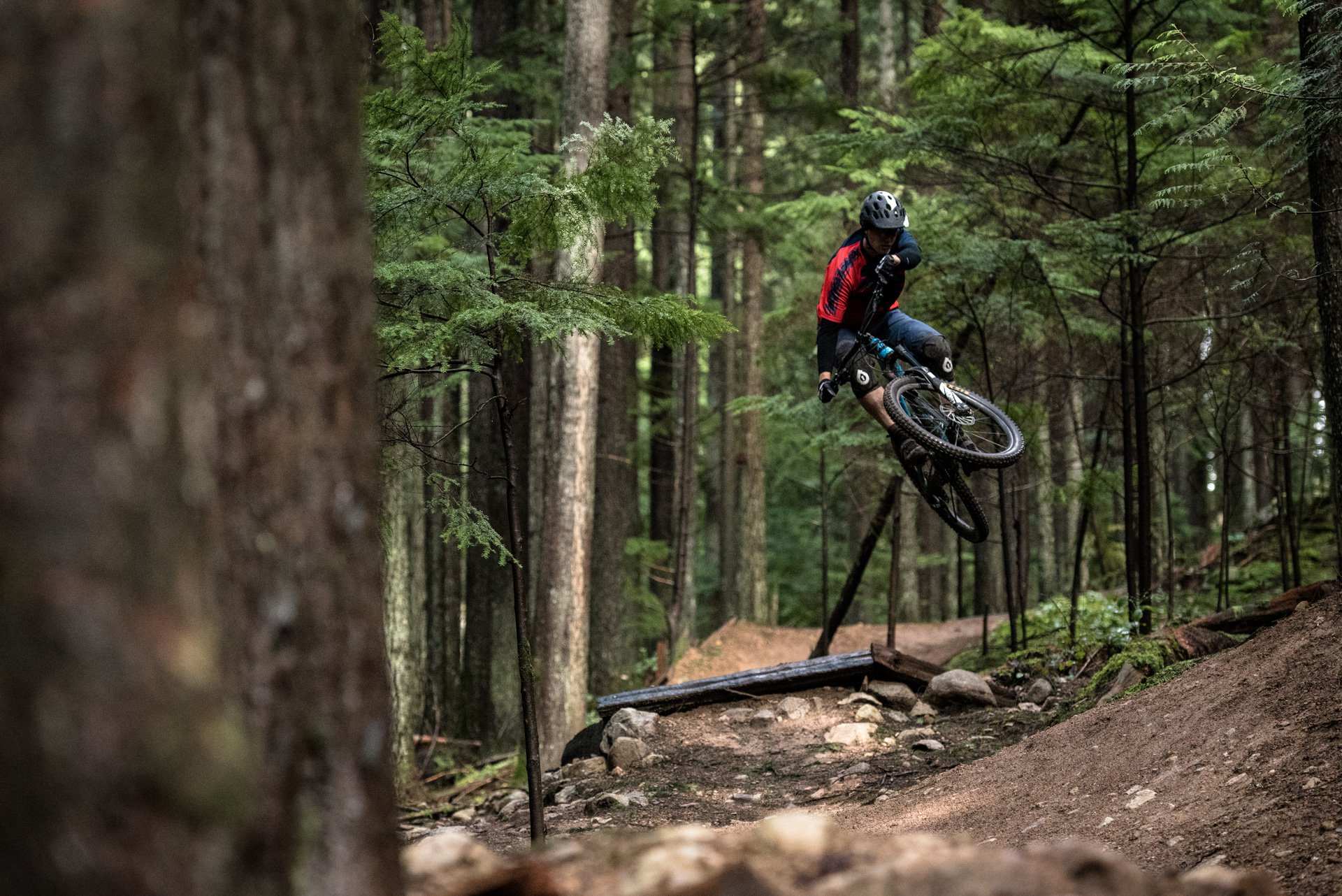
Send it, bud. I found running three tokens in the Lyrik resulted in a nice air spring ramp up, which helped prevent savage bottom outs when going a bit deep.
Out on the trail, I’ve been impressed with the Lyrik. Like I mentioned earlier I like the feel of the air spring in the Lyrik. While there is only low-speed compression adjustment on the fork, the Charger damper seems to do a great job of eating up high-speed compression events. It provides great support when pushing through corners, and soaks up big impacts with grace. Where I find many fork dampers start to show issues is on fast and rough terrain, and I thought the Lyrik performed well when the going got rough.
One thing I’ve noticed, and it’s not a good or bad thing, is that the fork doesn’t have a particularly lively feel to it. Some forks feel super active, and you can sense them furiously moving about when descending. The Lyrik is the opposite of that. It almost seems a bit lackadaisical in the way it does its business. It gets the job done all the same, just maybe with less enthusiasm and drama than some other forks on the market. I didn’t use the three position compression adjuster for OPEN/PEDAL/LOCK very much, but it does firm up the fork in PEDAL mode for climbing if you need the help. I only used LOCK for pavement or fire road climbs on occasion. The OE spec Lyrik RC on my personal bike doesn’t have the three position compression adjuster, and I don’t miss it one bit.
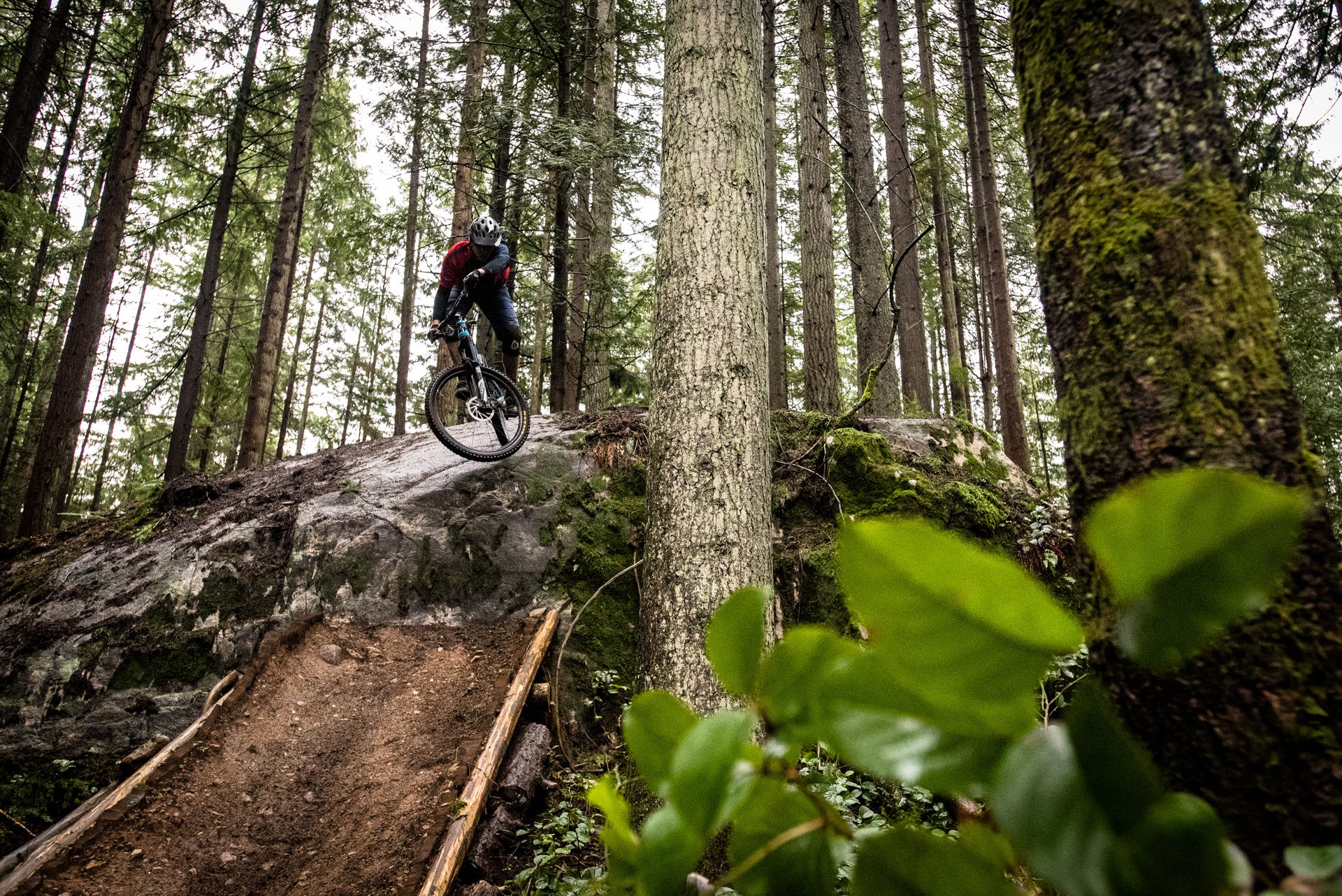
Trails here are generally rough and steep (with a few exceptions). Having a good front end on your bike is crucial, and the Lyrik did not disappoint.
Having had the Lyrik RTC3 for 6 months, I’ve had the opportunity to ride it from hot dusty summer days to biblical rain, and in below freezing conditions complete with snow. The Lyrik has been surprisingly consistent through those varied conditions. This particular Lyrik has seen a ton of riding through one of the wettest and coldest winters on record here in Vancouver and hasn’t batted an eye yet.
The Lyrik is a fantastic fork. I’m impressed with the build consistency, the chassis is suitably stiff, the air spring feels great, and the damper is terrific. The fork has been reliable and consistent throughout warm, cold, wet and dry, with no issues so far. The pricing and weight are in line with other 160 mm single crown forks, too. My only request would be for a coil sprung variant. The Rock Shox Lyrik gets two thumbs up from me.







Comments
Tim Coleman
7 years ago
Adam at Norco John Henry in North Vancouver figured out how to do it. He purchased the small parts from the catalog for an older coil Lyrik and possibly a few bits from the Boxxer. He then spliced the coil spring and parts in to a new Lyrik RC. I've ridden the fork and thought it felt excellent.
Reply
Tehllama42
7 years ago
I find that rather intriguing, as that means SRAM could reintroduce the Totem, as simply a coil sprung Lyrik... (and maybe eventually spring for 20x110 axle lowers). Sounds like it would pair brilliantly with the Super Deluxe Coil
Reply
WalterWhite
7 years ago
Or just offer a coil Lyrik and give the people a no nonsense awesome fork that needs no air, pucks, volume reducers, or whatever you want to call the chunks of plastic . In the end I think parts to convert were around $150. I could put a BOM together to lay out the parts needed. Weight difference was about 250g.
Reply
Tehllama42
7 years ago
We're definitely seeing the same idea.
The only reason I'd consider SRAM smart if they go a bit beyond a Lyrik-COIL would be to add a few more specific adjustments there - I could see a negative spring preload capability (would probably have some dumb name like 'Active CounterMeasure') and going to an RC2 control layout (arguably HSC would be more important given the propensity for a coil fork in that chassis to party hard)...
at this point it would be a substantially different fork (despite the really high part commonality) which would retail for about the exact $150 over the Lyrik equivalent - so why not bring that fork to market as a new generation Totem?
Reply
WalterWhite
7 years ago
I get what you are saying and could be great marketing for SRAM to have the Totem back, I'd buy one. As it sits the fork doesn't need anything else so air preload wouldn't be necessary and it is an RC which is fine for the damping functions. I am very impressed with how well the Franken-Lyrik performs and me being over 200lbs it does get a pretty good workout.
Reply
Tehllama42
7 years ago
I'm trying to put myself in SRAM's shoes - they already have a history of taking the basic concept behind what people have been cobbling together using their parts - adding some improvements that make sense - then selling it as a bespoke unit for a higher price tag, and laughing all the way to the bank (does 1x drivetrains ring a bell?).
I think the way they'd do that in this case would be to bring back the Totem name, and do something like a preload-adjustable coil sprung negative setup to make it really stand out as 'the' rad long travel single crown offering. They'd be in a fairly small market, shared only with other really high priced offerings (RFX-Coil, and a Fox36 R2C2 type coil)... then again I'm personally just too jazzed about how nicely my Pike is now running with a Luftkappe setup.
I think the true selling point is that there undeniably would be a parade of OEM customers to them wanting to have the ability to make a handy all-mountain bike that can run a Lyrik/Pike/Yari with a SuperDeluxe/Deluxe package across the whole line, and then be able to have a halo model rocking the Totem//LyrikCOIL and SuperDeluxeCOIL. The bike manufacturers no longer have to source anything crazy to give the entire model line an enviable amount of credibility as a hard-shredding bike.
Arguably the Vivid/Lyrik would make more sense on slightly lighter setups where the linkage doesn't provide a very progressive ratio, but having a top end air and coil option would make sense - and to support that, I think there is a case for keeping it as a Lyrik-Coil - then the top offering is going to be Lyrik/SuperDeluxe for long travel stuff, and both have an air and coil option... I just have a suspicion that SRAM engineers would want to take the opportunity to get in a touch more product differentiation, and that would justify a name change. If they don't, then the Lyrik-Coil could be a 2018 model year item, and probably would be a big hit.
Reply
WalterWhite
7 years ago
Some good thoughts for sure, and we are definitely on the same page. I am very much in agreement of having an air or coil option on any longer travel bike, both front and rear. I would much rather have the coil Fox X2 than the air coming on my new new bike but there is no option.
I'd love to do a comparison of a stock Lyrik, Luftkappe setup and my coil. I understand the Luftkappe is quite good as you say.
Reply
Jerry Willows
7 years ago
Good review Timmy!
Reply
Tim Coleman
7 years ago
Thanks bud!
Reply
whatyouthink
7 years ago
elaborate on this coil conversion. i want
Reply
WalterWhite
7 years ago
The fork has been amazing, zero issues and better than any other fork I have ridden except the custom coil Marzocchi 350 I had. It has been in service for over a year now and the only thing done was an oil change. More than likely I will get another fork done this year, though I am now thinking of converting a 36 to coil.
Reply
[user profile deleted]
7 years ago
This comment has been removed.
Tim Coleman
7 years ago
Hahaha! The Patrol review will be up real soon. Gotta keep you guys coming back for something!
Reply
[user profile deleted]
7 years ago
This comment has been removed.
Dan Webster
7 years ago
Population (and thus likely viewership) of the US far exceeds that of Canada... so, catering to the audience? Also, a less scary number, ha!
Reply
Merwinn
7 years ago
Any new high end LT SC fork is over $1K CDN MSRP, and if you are on a first name basis with a shop, give them a call for 'your price'. Alternatively, take 60 seconds and check CRC, which'll give you a ball park number.
Reply
Merwinn
7 years ago
My bad, no RS on CRC.
Reply
Merwinn
7 years ago
Nithe.
Reply
Kelownarider
7 years ago
@Tim Coleman - Can you tell me anything about the black link you have on your Patrol? Mine is blue. Is yours special?
Reply
Tim Coleman
7 years ago
Eagle eyes Kelownarider. That Patrol is running a Metric Rock Shox Super Deluxe rear shock, which requires a different rocker. You'll be able to read all about the frame and shock soon!
Reply
Max Horner
7 years ago
Great review, it's clear that its a fun, user friendly fork, that can perform exceptionally well! To be fair, I do think the three position compression adjustment does have its place, just not with all riders. I find that riding a raked out 29er, having the ability to provide a little more rigidity when climbing or pedaling xc-esque terrain is extremely beneficial. It's a feature that I use personally all the time. That said, I think that it's non-essential on most bikes, but even on bikes where it does provide a benefit it's up to personal preference.
Reply
Tim Coleman
7 years ago
Thanks Max! I found myself using it on the Patrol, and did find it beneficial in some situations. No doubt that some folks like yourself find it useful, and glad you chimed in here, as it's good info for anyone reading this review. I was just trying to show that I personally don't miss not having that feature on the Lyrik RC on my Range. But it'll be rider / locale / bike dependent.
Reply
Please log in to leave a comment.